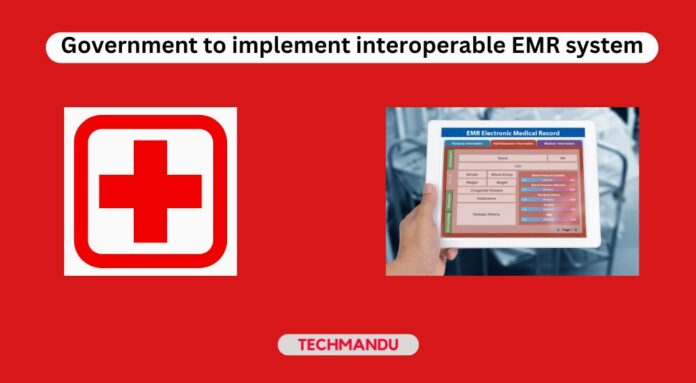The government of Nepal will soon start implementing interoperable electronic medical record (EMR) which makes it easy to share records of patients across hospitals and related institutions. The announcement of its initiation also called electronic health record (EHR) was made by the Health and Population Minister Pradip Paudel. The EMR could prove to be a milestone in Nepal’s drive for digital health practices and its digital transformation.
EMR assures health institutions such as hospitals to receive medical records of patients among them. While this is convenient for the institutions themselves, it’s also beneficial to the patients. They won’t have to physically produce their medical reports at different health institutions. They will be recorded electronically in servers and shared across them.
“We expect the interoperable EMR to reduce patient expenses prevent repeated tests and help deliver services efficiently,” Health Minister Paudel said.
In recent years, the government has stressed more aggressive approaches to digital practices for the health sector. Though the effectiveness and substance can be debated, there have been talks and efforts. Telemedicine is being undertaken by Dhulikhel Hospital which can be seen as a prime example of the digital transformation of health service in Nepal. Check out: Hamro Patro starts Telehealth service
The EMR though is a whole new direction. It brings comfort and convenience to doctors, patients, health institutions, and all related stakeholders.
Interoperable electronic medical report in Nepal
Electronic medical record will remove the need for fragmented treatment systems for patients. It also eliminates the need for the same testing at different health institutions because the records can be shared from the previous hospital where similar testing has already been performed.
The interoperability approach by the government results in an integrated patient-centric health system which enhances quality health services and strengthens trust between the citizens and the health system.
Interoperability allows for data exchange between hospitals
EMR is already put into practice by hospitals and other health institutions in Nepal. However, the lack of interoperability means that they can’t share data. This has forced patients to undergo similar tests at different hospitals or testing facilities increasing their expenses and wasting their time.
However, now, health institutions need to upload patients’ names, diagnoses, recommendations, and laboratory and radiology information into the EMR. The system then becomes responsible for sharing them with other health facilities hence interoperability.
Also: Driving License on Nagarik App goes fully digital with QR
The Health and Population Ministry will soon bring into operation a portal for authorized personnel to access vital information online. The government too will be able to access the data with permission under law. The portal will play a significant role in interoperable electronic medical report in Nepal.



